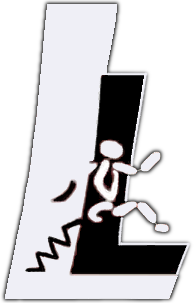| Both sides previous revision
Previous revision
Next revision
|
Previous revision
Next revision
Both sides next revision
|
start [2019/04/05 21:59]
Andre Seyfarth [News] |
start [2019/08/14 14:21]
Christian [News] |
| |
| <slider :media:pako.jpg> | <slider :media:pako.jpg> |
| ===== Prosthesis ===== | ===== Prostheses ===== |
| To investigate models of the muscle-tendon dynamics on humans we developed the research platform [[projects:projects_prostheses|PAKO]]. Using our insights on gait biomechanics, walking and running could be realized with the robotic [[projects:projects_walkrunankle|Walk-Run Ankle]] prosthesis. | To investigate models of the muscle-tendon dynamics on humans we developed the research platform [[projects:projects_prostheses|PAKO]]. Using our insights on gait biomechanics, walking and running could be realized with the robotic [[projects:projects_walkrunankle|Walk-Run Ankle]] prosthesis. |
| | |
| ====== News ====== | ====== News ====== |
| |
| * **Movement Academy on Parkinson Gait** The Lauflabor organizes the [[http://wiki.ifs-tud.de/biomechanik/aktuelle_themen/bewak2019|first movement academy]] in Darmstadt on June 4 and 5, 2019 | * {{::ansymb_logo_i.png?90 | Teaching course ANSYMB II}} **Running upcoming winter term!** [[http://www.ansymb.tu-darmstadt.de/| Analysis and Synthesis of Human Movements]] |
| | ====== Pick of the Month ====== |
| |
| * **Dynamic Walking 2019** is announced! Click [[http://dynamicwalking.org/index.php/dw/2019|here]] for details. | |
| |
| * **Lauflabor Best Student Thesis Award 2018** Apply now until June 30, 2019. Click here for details: {{ :ll02_best_thesis_award18.pdf | Flyer }} | ==== Stance and Swing Detection Based on the Angular Velocity of Lower Limb Segments During Walking ==== |
| |
| * {{::ansymb_logo_i.png?90 | Teaching course ANSYMB II}} **Running this summer term!** [[http://www.ansymb.tu-darmstadt.de/| Analysis and Synthesis of Human Movements]] | |
| ====== Pick of the Month ====== | |
| |
| |
| ==== Concerted control concept in locomotion ==== | A new concept for stance and swing detection based on lower limb segments is introduced in a recently published paper by Grimmer et al. in //Frontiers in Neurorobotics// [[https://www.frontiersin.org/articles/10.3389/fnbot.2019.00057/full?&utm_source=Email_to_authors_&utm_medium=Email&utm_content=T1_11.5e1_author&utm_campaign=Email_publication&field=&journalName=Frontiers_in_Neurorobotics&id=459435|Stance and Swing Detection Based on the Angular Velocity of Lower Limb Segments During Walking]]. |
| | |
| {{ :fig_2.png?nolink&200|}} {{ :fig_1a.png?nolink&200|}} | |
| | |
| A new concept termed concerted control is introduced in our recently published paper in the //IEEE Transactions on Medical Robotics and Bionics// journal titled [[https://doi.org/10.1109/TMRB.2019.2895891|Concerted control of stance and balance locomotor subfunctions -Leg force as a conductor]]. | |
| |
| | {{ :stance_swing_concept.png?nolink&500|}} |
| | {{ :stance_and_swing2.png?nolink&108|}} |
| |
| **Abstract:** | **Abstract:** |
| |
| In human locomotion, the complex structure of the human body is controlled such that conceptual models (e.g., the spring-loaded-inverted-pendulum model) can describe the significant features. This suggests that the interplay of the complex control and musculoskeletal systems projects into a low-dimensional space to perform different movements. Such simplification can involve splitting the task into different modular control subproblems (locomotor subfunctions) that can be solved individually. Here, we asked how two locomotor subfunctions, namely stance, and balance, could be coordinated to generate repeatable and robust motor commands. We developed a simple neuromechanical hopping model, based on decoupling axial and perpendicular leg forces. For this, bouncing behaviors and trunk posture control can be addressed by a knee extensor muscle and biarticular thigh muscles, respectively. We suggest utilizing the leg force feedback as interplay among environment, body mechanics, and sensory control to synchronize the decoupled subfunctions. We evaluated this approach in push recovery, attenuating ground drop perturbations and by investigating its sensitivity to the reflex gain as the control parameter. Leg force feedback can improve the robustness of hopping by generating rhythmic hopping patterns. Such a parsimony model-based control concept could simplify controlling assistive devices, such as exoskeletons and prostheses. | Lower limb exoskeletons require the correct support magnitude and timing to achieve user assistance. This study evaluated whether the sign of the angular velocity of lower limb segments can be used to determine the timing of the stance and the swing phase during walking. We assumed that stance phase is characterized by a positive, swing phase by a negative angular velocity. Thus, the transitions can be used to also identify heel-strike and toe-off. Thirteen subjects without gait impairments walked on a treadmill at speeds between 0.5 and 2.1 m/s on level ground and inclinations between −10 and +10°. Kinematic and kinetic data was measured simultaneously from an optical motion capture system, force plates, and five inertial measurement units (IMUs). These recordings were used to compute the angular velocities of four lower limb segments: two biological (thigh, shank) and two virtual that were geometrical projections of the biological segments (virtual leg, virtual extended leg). We analyzed the reliability (two sign changes of the angular velocity per stride) and the accuracy (offset in timing between sign change and ground reaction force based timing) of the virtual and biological segments for detecting the gait phases stance and swing. The motion capture data revealed that virtual limb segments seem superior to the biological limb segments in the reliability of stance and swing detection. However, increased signal noise when using the IMUs required additional rule sets for reliable stance and swing detection. With IMUs, the biological shank segment had the least variability in accuracy. The IMU-based heel-strike events of the shank and both virtual segment were slightly early (3.3–4.8% of the gait cycle) compared to the ground reaction force-based timing. Toe-off event timing showed more variability (9.0% too early to 7.3% too late) between the segments and changed with walking speed. The results show that the detection of the heel-strike, and thus stance phase, based on IMU angular velocity is possible for different segments when additional rule sets are included. Further work is required to improve the timing accuracy for the toe-off detection (swing). |
| | |
| **Keywords:** Locomotor subfunction, positive force feedback, reflex control, sensor-motor map. | |
| |
| | For further publications of the autohr please check: [[https://www.researchgate.net/profile/Martin_Grimmer3|ResearchGate]], [[https://scholar.google.de/citations?hl=de&user=gDF_uHUAAAAJ&view_op=list_works&sortby=pubdate|Google Scholar]], [[https://orcid.org/0000-0003-1921-1433|ORCID]] or [[https://loop.frontiersin.org/people/390560/overview|LOOP]] |
| \\ | \\ |
| |
| |
| [[publications:publications_podcasts_pick_of_the_month|Read previous news...]] | [[publications:publications_podcasts_pick_of_the_month|Read previous news...]] |




